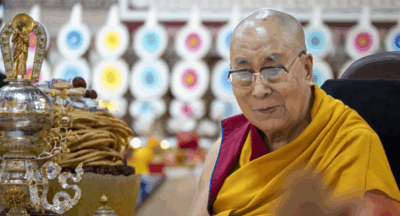By A K Shrivastav
The 243-member Bihar assembly is poll-bound, with elections likely in October-November this year. With 132 seats, the National Democratic Alliance (NDA) led by the Bharatiya Janata Party (BJP) and Janata Dal (United) having 78 and 45 seats respectively is in power. The opposition INDIA Alliance with 110 seats is a potent threat to the NDA in the upcoming election. In particular, Lalu Prasad’s Rashtriya Janata Dal (RJD) with 75 seats is closely behind the BJP and may upset its poll equations. That makes the 2025 Bihar assembly elections a keenly watched affair with a nail-biting finale in the offing. The BJP, which did not fare as well in the last Lok Sabha elections, has a lot on stake. It must perform exceptionally well to silence those who think Prime Minister Narendra Modi’s charm is on the wane.
Besides, an interesting phenomenon seen in Bihar’s political landscape is the entry of young leaders. RJD’s Tejashwi Yadav (35), Lok Janshakti Party’s (Ram Vilas) or LJP (RV) Chirag Paswan (42), and poll-strategist Prashant Kishor (48) of the newly-minted Jan Suraaj Party (JSP) bring a touch of youth and freshness in Bihar politics, which has been dominated by Lalu Prasad (77) and Bihar Chief Minister Nitish Kumar (74) for the past several decades. Interestingly, Nitish Kumar’s only son Nishant (49) has also made his presence felt in recent months, although he keeps signifying his father’s importance. But the message that he is going to be the political heir of Nitish Kumar is not lost on anyone.
Bihar’s support has been crucial for the formation and survival of the BJP government at the Centre. South India has never been a BJP stronghold and it’s not even today. Bengal is ruled by Mamata Banerjee, who has never let the impression fade that she is a prime minister hopeful. What makes the BJP stay in power is the support it draws from the Hindi heartland of Bihar, Uttar Pradesh, and North India. While Uttar Pradesh is still a BJP stronghold, Bihar’s polity is not so overwhelmingly in support of the saffron party. The neck and neck seat tally of BJP and RJD is a clear pointer to this. Given this, BJP must perform better than ever in Bihar to fend off Opposition’s moves to unseat it at the Centre.
As Bihar politics stands today, it can be safely said that no party is going to have a clear majority in the Assembly. Given this, post-election political alliances are the only option. Nitish Kumar has shown immense flexibility in this matter, forging alliances on both sides of the divide at his convenience, ensuring he remains in power in any eventuality. Despite having an overwhelmingly large number of seats compared to Nitish Kumar’s JD (U), BJP has not been able to appoint its chief minister in Bihar. This makes Nitish Kumar a wily, formidable political leader, who only BJP can trust – as their partnerships over the years underscore.
Some analysts believe that just ahead of the Assembly election, RJD’s Tejashwi Yadav could be arrested and put in jail, a strategy that worked in favour of the BJP in the last Lok Sabha election when Delhi Chief Minister Arvind Kejriwal was put behind the bars. However, replaying this in Bihar may backfire, too, as Tejashwi has not been as acerbic in his criticism of BJP and Modi as Kejriwal. Tejashwi might even receive sympathy and the BJP might lose what could be a 50-50 percent chance.
An interesting thing about this election is whether BJP will allow its young leaders to come to the fore and claim leadership as has happened in Madhya Pradesh, Chhattisgarh, Odisha, and Maharashtra. More interestingly, what may make BJP not to do so as it has not promoted young leaders in Bihar to the forefronts and is relying on old war horses? Is it the insecurity of the top BJP leadership? Well, if BJP goes into the poll with its insecurities and trust alliance partners with key posts such as the Chief Minister, BJP will get what it asks for, a second-fiddle role.
While this strategy may serve its intended purpose to keep the top-leadership insulated, Bihar will once again get a government that will focus on building roads and bridges rather than opening and upgrading higher education avenues and finding employment for the youth. Populist agenda such as glorifying Operation Sindoor and neglecting real issues like higher education and employment should not be the go-to option. It doesn’t align with even BJP’s Viksit Bharat vision.
This opens up a prospect that few can imagine today. Can Prashant Kishor with a solid pro-education background, championing employability, emerge as a king maker in the post-poll scenario? Let’s keep our fingers crossed! (IPA Service)

